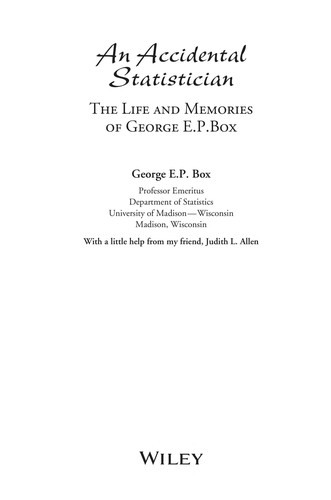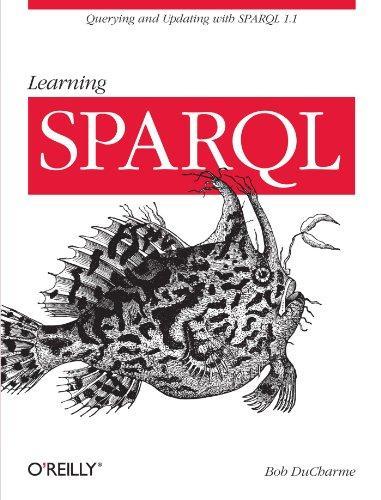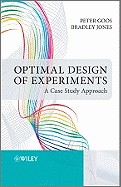Very nice book that explains some advanced topics using computer generated optimal designs. Optimal designs seem the way to, as these encompass classical designs to a large degree.
User Profile
This link opens in a pop-up window
spdrnl's books
To Read (View all 5)
User Activity
RSS feed Back
spdrnl rated How to Know a Person: 4 stars

How to Know a Person by David Brooks
As #1 New York Times bestselling author David Brooks observes, "There is one skill that lies at the heart of …
spdrnl reviewed Optimal design of experiments by Peter Goos
spdrnl reviewed Simulation by Sheldon M. Ross
None
5 stars
This is a nice book on discrete event simulation. The emphasis of the book is on understanding all the random and statistical theory surrounding such simulation. A first principles approach if you will.
Additionally there is quite some information on how parameter estimates can be made more efficient, requiring less compute.
spdrnl reviewed Demand Forecasting Best Practices by Nicolas Vandeput
None
5 stars
Vandeput succeeds in conceptualizing demand forecasting as a process from start to end.
There is no code in the book, and the book is better for it. If you want to understand the pitfalls of forecasting and want to know how to survive the many biases that plague the field this is a great book.
Although technology has a big impact on forecasting, successful forecasting requires way more than a few libraries.
Vandeput sets the bar high, and with that sets an example for many data scientists and ML practitioners.
spdrnl rated Demand Forecasting for Executives and Professionals: 5 stars
spdrnl reviewed Fooled by Randomness by Nassim Nicholas Taleb
None
4 stars
This book is already more than 20 years old, yet the content still rings true. Written just after the dot-com crash, it feels as if the financial system is ever melting and Taleb offers a credible explanation for this feeling.
Although the book is all about the financial markets, and about financial traders, it is not about how to invest. Rather it is a personal account of how the writer, a trader himself, has spent his life trying to to avoid being fooled by randomness. Randomness is everywhere, and humans are very bad at spotting it. Taleb is offering the following type of insights. Given the number of active financial traders in the financial industry, hundreds of thousands, there are always traders having streaks of luck (think Bernoulli trials/coin tosses) or traders being in sync with temporary market developments. These traders invariably get promoted, and according to Taleb, mostly 'blow-up': …
This book is already more than 20 years old, yet the content still rings true. Written just after the dot-com crash, it feels as if the financial system is ever melting and Taleb offers a credible explanation for this feeling.
Although the book is all about the financial markets, and about financial traders, it is not about how to invest. Rather it is a personal account of how the writer, a trader himself, has spent his life trying to to avoid being fooled by randomness. Randomness is everywhere, and humans are very bad at spotting it. Taleb is offering the following type of insights. Given the number of active financial traders in the financial industry, hundreds of thousands, there are always traders having streaks of luck (think Bernoulli trials/coin tosses) or traders being in sync with temporary market developments. These traders invariably get promoted, and according to Taleb, mostly 'blow-up': loose more money than they ever gained. Fooled by randomness.
Taleb connects the statistical woes of the financial industry to philosophy of science. It is hard to run scientific experiments in economics or the financial markets. As a result there is a lot of dubious extrapolation going on. One could for example (not in the book), model data on economic growth in the UK in the period 1985 to 2005 using a Gaussian curve, and come to the conclusion that large swings in growth are 'improbable'. As history has shown a few times, large swings are possible. This is what Taleb calls the fat tail problem: extreme values are far more probable than many conventional models are suggesting.
Extrapolation goes by the philosophical name of induction: the act of generalizing results form a small sample of data to overarching principles. This problem is also known as 'Hume's Problem'. It is also central to work of Karl Popper, well known for his falsification principle: either a theory has been refuted, or a theory has withstood refutation until the current day. But theories are never true. Poppers views match well with the type of forecasting Taleb is invested in, but at large do not represent current thinking in philosophy of science as far as I know.
One of the nice things is that Taleb conveys how many of his insights are based not on mathematics, but on Monte Carlo simulations. Seemingly Taleb has a knack for modeling his domain in simulations. And he is getting quite some mileage out of it. Not only does he recount how he is a man of leisure at the beginning of this century, in 2023 he is still active as a principal scientific adviser at Universa, an investing company. And today, the financial markets are again in unknown territory. Universa's performance over the next years will add to the tale.
One of the lesser nice things about the book is that Taleb is not interested in really educating the public on his views. His pay-off, self-confessed, is in making his views less obscure, therefore more bankable, without spilling the beans. Although rich in often personal anecdotes that do offer real insights, this, and his writing style, including the from his standpoint obvious excursion into philosophy of science, add significantly to a feeling of self-mystification.
Randomness itself though is a big creator of mystery. So this might just be the way.
spdrnl rated How to measure anything: 5 stars
spdrnl rated A Mind At Play: 4 stars

A Mind At Play by Jimmy Soni
"The life and times of one of the foremost intellects of the twentieth century: Claude Shannon--the architect of the Information …
spdrnl rated Range: Why Generalists Triumph in a Specialized World: 4 stars

Range: Why Generalists Triumph in a Specialized World by David Epstein
Range: Why Generalists Triumph in a Specialized World is a 2019 book by David Epstein in which he expands on …
spdrnl rated The Hidden Half: 5 stars
spdrnl rated Man from the Future: 5 stars
spdrnl reviewed Effect by Nick Huntington-Klein
None
4 stars
It has been hard to get a good overview of quasi-experimental study designs. Unlike random-control group designs, stemming from medicine, quasi experimental designs stem from different disciplines.
Quasi-experimental study designs aim to tease out causal effects in observational settings. Where random-control group designs have strong internal validity, quasi-experimental designs often have stronger external validity. For those interested, look up "Qausi-experimental study designs - paper 2: Complementary approaches to advancing global health knowledge" By Geldsetzer and Fawzi (2017).
This book first gives a step-by-step introduction of regression methods, and some do-calculus, before progressing to describing thoroughly a large set of quasi-experimental methods. As it often goes, the topic is endless, so although the set is considerable, it is by no means exhaustive; and the author makes no such claim. The tone of the book is very informal (which does not add to brevity), and provides examples in Python, R and Stata.
…
It has been hard to get a good overview of quasi-experimental study designs. Unlike random-control group designs, stemming from medicine, quasi experimental designs stem from different disciplines.
Quasi-experimental study designs aim to tease out causal effects in observational settings. Where random-control group designs have strong internal validity, quasi-experimental designs often have stronger external validity. For those interested, look up "Qausi-experimental study designs - paper 2: Complementary approaches to advancing global health knowledge" By Geldsetzer and Fawzi (2017).
This book first gives a step-by-step introduction of regression methods, and some do-calculus, before progressing to describing thoroughly a large set of quasi-experimental methods. As it often goes, the topic is endless, so although the set is considerable, it is by no means exhaustive; and the author makes no such claim. The tone of the book is very informal (which does not add to brevity), and provides examples in Python, R and Stata.
Causal methods become relevant for data scientists if one wants to move past predictive modeling, and wants to explore what measure effectively influence behavior.
What would have made this book for me perfect is Bayesian modeling. The different designs now rely on a wild scattering of statistical packages in for example Python. A lot of these methods could also be executed using a more general Bayesian package, harmonizing and better illuminating the differences and commonalities between the methods.
All-in-all a very good read.











